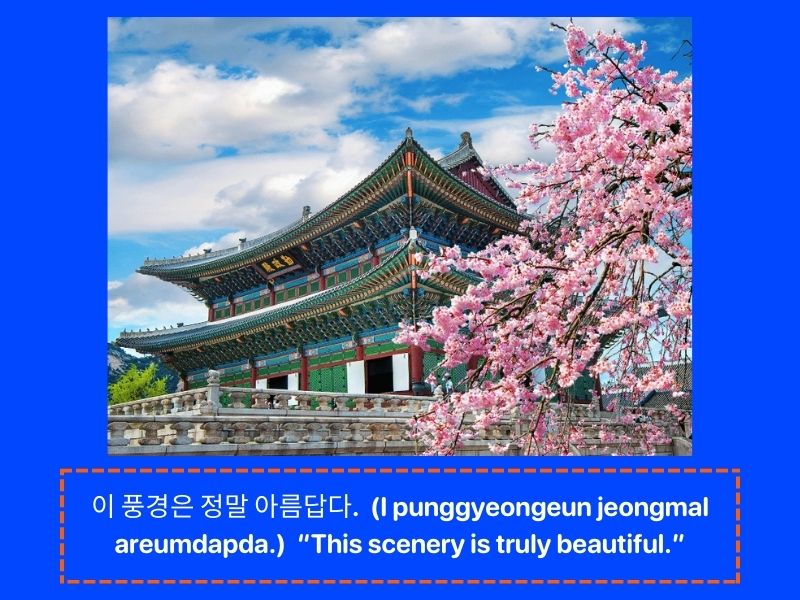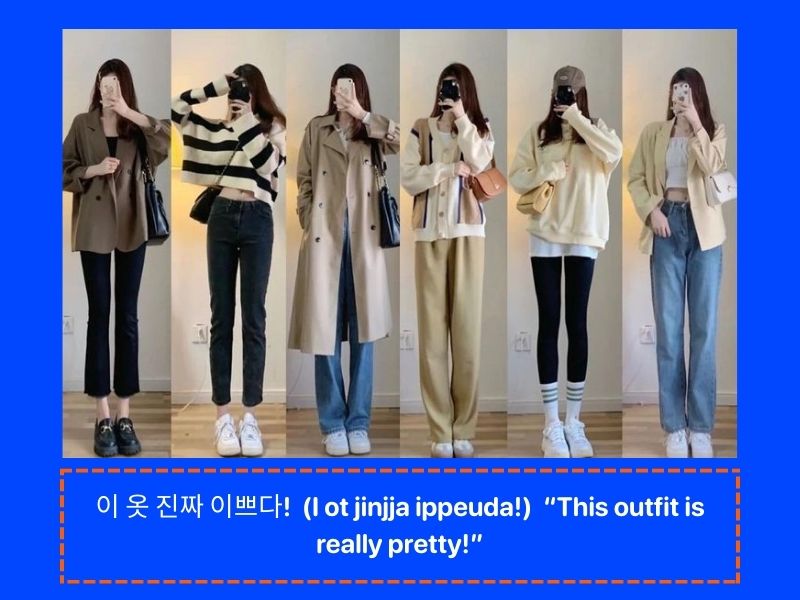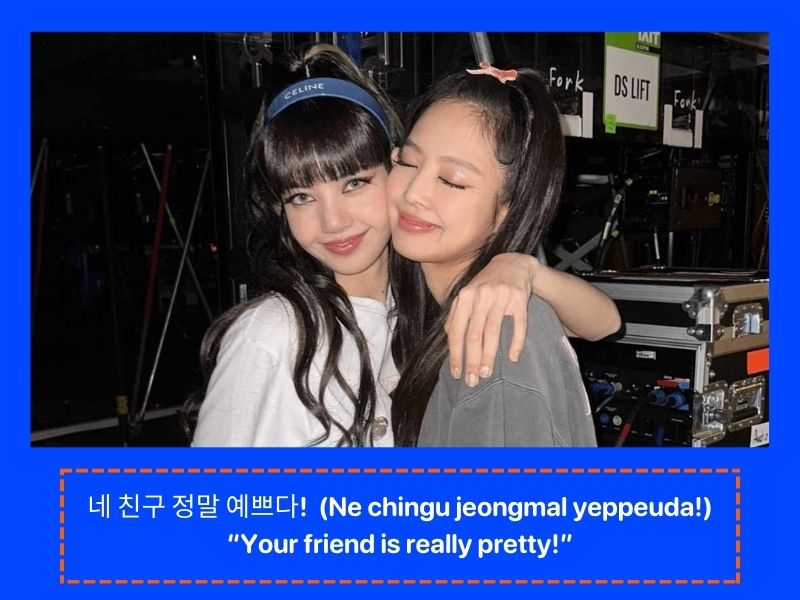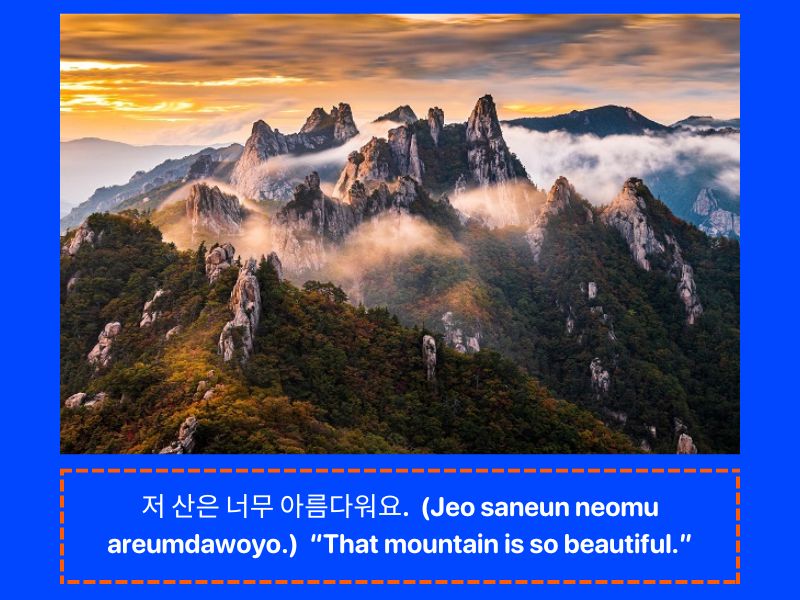
In this article, you’ll learn how to express beauty in Korean, understand the context of each term, and practice with real-life examples. Let’s dive into the different ways to say beautiful in Korean language and use them naturally in conversation.
Common Ways to Say Beautiful in Korean
When it comes to describing beauty in Korean, you’ll come across several commonly used words. Each expression varies in tone, formality, and context, so choosing the right one is important.
Here are the top phrases for how to say beautiful in Korean.
아름답다 (Areumdapda) – Formal

- Meaning: Beautiful (poetic, elegant, formal)
- Pronunciation: [Ah-reum-dap-da]
아름답다 is a formal and poetic way to say beautiful in Korean. It’s often used in written Korean, songs, poetry, or to describe scenery, emotions, or grand moments. It’s less commonly used in daily speech to describe people but perfect for artistic or emotional expressions.
Example:
- 이 풍경은 정말 아름답다. (I punggyeongeun jeongmal areumdapda.) “This scenery is truly beautiful.”
Use this term when you want to convey deep appreciation for natural beauty, artistic expression, or sentimental feelings.
예쁘다 (Yeppeuda) – Standard

- Meaning: Pretty / Beautiful (common and widely used)
- Pronunciation: [Yeh-ppeu-da]
예쁘다 is one of the most frequently used words to describe beauty, especially for people, things, or small animals. It strikes the perfect balance between politeness and friendliness.
If you’re wondering how to say beautiful in Korean in everyday conversations, 예쁘다 is your best bet.
Example:
- 그녀는 정말 예뻐요. (Geunyeoneun jeongmal yeppeoyo.) “She is really beautiful.”
This phrase is perfect for compliments and social situations, and you’ll hear it a lot in K-dramas and songs.
Read more: I love you in Korean
이쁘다 (Ippeuda) – Informal Slang

- Meaning: Pretty / Cute (slang version of 예쁘다)
- Pronunciation: [Ee-ppeu-da]
이쁘다 is a more casual and colloquial variation of 예쁘다. It has the same meaning but is used in very informal settings. You’ll often hear it in spoken Korean among friends or family.
Example:
- 이 옷 진짜 이쁘다! (I ot jinjja ippeuda!) “This outfit is really pretty!”
Use this version if you’re texting a friend or chatting casually. It’s a great way to sound more natural and native-like in informal conversations.
Contextual Usage of Beautiful Phrases
In Korean, just like in English, the word beautiful can be applied to people, places, objects, and even ideas. Understanding when and how to use each term makes your Korean sound more fluent and accurate.
Describing People

When talking about someone’s appearance, the most common words are 예쁘다 (for women and sometimes for cute children) and 잘생기다 (for men, meaning “handsome”). 아름답다 can also be used, especially in poetic or emotional contexts.
Example Phrases:
- 그녀는 아름다운 미소를 가지고 있어요. (Geunyeoneun areumdawoon misoreul gajigo isseoyo.) “She has a beautiful smile.”
- 네 친구 정말 예쁘다! (Ne chingu jeongmal yeppeuda!) “Your friend is really pretty!”
Knowing how to say beautiful in Korean language when complimenting someone’s appearance can help you build relationships and express appreciation respectfully.
Describing Scenery

When talking about nature or landscapes, 아름답다 is the most suitable word due to its poetic tone.
Example Phrases:
- 한국의 가을은 정말 아름답습니다. (Hangugui gaeul-eun jeongmal areumdabseumnida.) “Autumn in Korea is truly beautiful.”
- 저 산은 너무 아름다워요. (Jeo saneun neomu areumdawoyo.) “That mountain is so beautiful.”
This usage shows how language connects with emotions and appreciation of the environment in Korean culture.
Complimenting Objects

When describing clothes, accessories, or gifts, 예쁘다 and 이쁘다 are typically used.
Example Phrases:
- 이 가방 예쁘다! 어디서 샀어? (I gabang yeppeuda! Eodiseo sasseo?) “This bag is beautiful! Where did you buy it?”
- 네 새 폰 진짜 이쁘다! (Ne sae pon jinjja ippeuda!) “Your new phone is so pretty!”
Mastering these nuances gives your Korean speech more depth and helps you sound more native-like.
Conclusion
Now you know the most common ways to say beautiful in Korean! From the formal 아름답다 to the everyday 예쁘다 and the casual 이쁘다, each word adds flavor and emotion to your conversations.